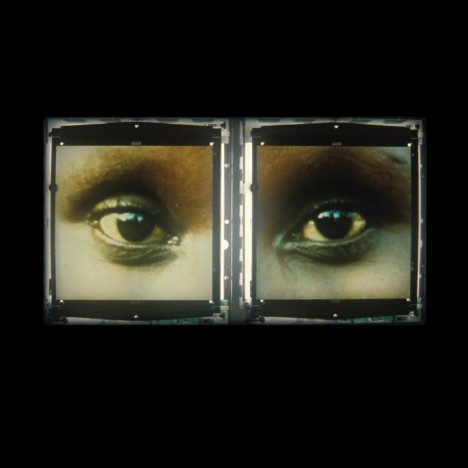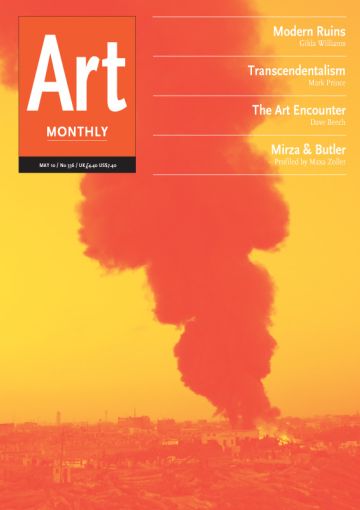Feature
Encountering Art
Dave Beech critiques Jacques Rancière’s concept of the ‘emancipated spectator’

Jacques Rancière’s The Emancipated Spectator cover image
Dave Beech critiques Jacques Rancière’s concept of the ‘emancipated spectator’
Today some of the key debates on what art is, can be, or ought to be centre on the way art is encountered. What kinds of experience, both individual and collective, ought to be developed for art? And what kind of art can be developed to facilitate or provoke new encounters? It is no accident that socially engaged art is among those contemporary practices that are involved in the militant reconfiguration of what used to be called art’s viewer, pressing the case instead for participation, interaction, community specificity, co-authorship, collaboration and counterpublics in art. It is interesting to note, therefore, that Jacques Rancière’s newly translated book, The Emancipated Spectator, turns the screw on two related ‘errors of critical thought’: socially engaged art and the critique of the spectator.
While the art world has been pursuing the intersubjective – subjects encountering each other – rather than the more familiar subjective experience of art objects, Rancière has been arguing instead that we should give the spectator another chance. This defence is linked to a radical philosophy of politics but it abstracts the debate to such a degree that it loses all bite. In Rancière’s terms, the procedures of administration, control and organisation of society – those institutions and systems that are passed off conventionally as the sphere of politics – are best described not as politics but as policing. Politics, on the contrary, is a demand which issues from an unheard of, excluded, invisible position. He calls this ‘the capacity of anybody’, explaining it as ‘the kind of universality that politics is about: the capacity of anybody’. ‘Anybody’ is another name for what Rancière, in the past, has called the part des sans-part (‘the part of no part’). ‘The political subject is not a part of the social structure, an element of the process of production,’ Rancière says, ‘it has to come as a supplement to the distribution of powers, places, functions and identities that make up a society, a supplement to the distribution of the capacity.’
Rancière defends the passive, ignorant spectator as the part des sans-part of the art system. Rancière is on the side of the unlearned against the expert, the pupil against the teacher, of the potentially disruptive knowledge of the untrained intelligence. Instead of seeing the spectator as the repository of established ideologies and cultural practices – as the specific body adapted to art’s institutionalisation – he takes sides with the spectator against all the critical methods we have developed to counteract the spectator’s supposed incapacities. Rancière diagnoses the situation by noting that: ‘According to the accusers, being a spectator is a bad thing for two reasons. First, viewing is the opposite of knowing: the spectator is held before an appearance in a state of ignorance about the process of production of this appearance and about the reality it conceals. Second, it is the opposite of acting: the spectator remains immobile in her seat, passive. To be a spectator is to be separated from both the capacity to know and the power to act.’
What Rancière detects in this critical discourse of the spectator, reapplying his argument from The Ignorant Schoolmaster, is a ‘structure of domination and subjection’, which he calls ‘the logic of the stultifying pedagogue, the logic of straight, uniform transmission’. Just as the pupil is dominated and subjected by the very act of attempting to overcome their ignorance by the knowledgeable teacher (and is emancipated by the ‘ignorant’ teacher who ‘does not teach his pupils his knowledge, but orders them to venture into the forest of things and signs’), the spectator is dominated and subjected by the very act of attempting to overcome their passivity and ignorance. Against this, Rancière insists that ‘the incapable are capable’.
The argument is compelling only if Rancière’s abstraction of the spectator is allowed to eclipse a more specific analysis of what is at stake in the current debate on art’s encounter. Instead of providing a historical account of the changing role and status of the spectator, Rancière speaks in generalities. What he has to say about the critique of the spectator is equally true for Bertolt Brecht, Guy Debord, Antonin Artaud, Jean-Luc Godard and Plato, amongst others. Lacking all specificity, Rancière offers a ham-fisted account of the critique of the spectator. He argues, for instance, that Brecht regarded the spectator with derisory suspicion, as if the complex relationship that Brecht sought with his audiences were one-dimensional, when even Brecht’s most didactic plays contained catchy songs, knockabout comedy and great performances by the likes of Peter Lorre and Charles Laughton.
My purpose is not to defend Brecht against criticism but to show that Rancière’s generalisations, which might seem convincing within his abstract argument, have no sticking power. In saying this I am not simply insisting on the facts or asserting the value of empirical research. Rancière’s error is to assume that abstract questions about art can be settled through abstract debate. This error can be avoided if it is understood that controversies about what art is or ought to be are rarely if ever fought on abstract terms (we don’t work out what art is and then proceed to develop instantiations of the general definition). Rather, the deepest and broadest questions about art are always channelled through disputes over specific and detailed local issues – often quite arcane technical questions, in fact.
This is why, at different times, it has seemed as if everything in art, including its very existence, depended on, for instance, protecting form from content, or having to choose between finish and brushwork, or either asserting or subverting the division between high and low culture, or siding with the horizontal against the vertical, or preferring the occupation of time over space, or exploring ideas instead of materials, or addressing the viewer as ocular or embodied. It must be stressed here that it is never a question of identifying one variant over another, as if, say, beauty is always preferable to the grotesque, or participation is always preferable to solitary contemplation. The key is to see these specific disputes, which always have far-reaching ramifications for art per se, as conjunctural. That is to say, it is necessary to avoid the temptation – or pressure – to take sides, affirmatively or critically, once and for all, abstracted from the contingencies of practice and history. It is important to insist, on the contrary, that what is at stake in these detailed questions about art changes according to specific historical conditions. So, brushwork might subvert the academicism of finish in one conjuncture and then be rejected for a more crafted finish when brushwork has become bloated with power. Hence, if we are to develop a notion of the spectator or a theory of socially engaged art, it will not be in an ahistorical, ideal or generic way.
Moreover, since these specific questions are the means by which art is disputed as such, they can never be isolated from an ensemble of questions. In fact, since Modernism emerged it has seemed impossible to produce new works and new configurations of art without at the same time questioning the existing spectator. As such, the critique of the spectator today is an inherited component of a stream of modernist and avant-gardist critiques of art, each critique proposing new formal, technical, aesthetic and social possibilities for art. Therefore we can see that it is false to separate the critique of the spectator from a set of questions about cultural and social transformation. Modernism and avant-gardism critique the spectator and simultaneously call forth new spectators, new publics and new experiences as a condition of calling forth new art, new institutions, new social forms, new ideologies and a new world.
My doubts regarding Rancière’s mission to defend the spectator against political, modernist and avant-gardist critique are confirmed when the exact qualities of the spectator that Rancière wants to preserve are identified: the critique of the spectator is self-defeating, according to Rancière, because the spectator already ‘observes, selects, compares, interprets’. He gives us nothing else to go on. That’s it. Rancière never invokes any other kind of subjectivity for his plagued spectator than the all-too-familiar subjective capacities of the contemplative aesthetic onlooker. But there is simply no reason to reduce aesthetics to such a narrow set of Romantic tropes. If we want to give aesthetics their full weight within the multifarious processes of emancipatory struggles, then it is important – at the very least – to engage in a sustained, reflexive self-examination of their power, rather than merely to reassert the inherited values and symbolic violence of pre-modern cultivation.
The spectator is the linchpin of aesthetic experience and therefore needs to be protected from the encroachments of those modernist, avant-gardist and postmodernist practices and discourses that link emancipation with art’s immanent critique, including but not limited to the critique of art’s institutionalised subject – the spectator or viewer. It is easy to see why Rancière is motivated to misrepresent engaged art by saying ‘the critique of the spectacle often remains the alpha and omega of the politics of art’ and why his defence of the spectator is twinned with a critique of socially engaged art: ‘The very same thing that makes the aesthetic “political” stands in the way of all strategies for “politicising art”,’ he says. It is only by dismissing art’s critical self-scrutiny that the spectator has any chance of survival.
The question is not whether to be for or against the spectator, but what is at stake today in the defence of a passive, solitary, pensive spectator. And, given that the art world is currently awash with new artworks, new techniques and new theories of art’s encounter, it is safe to say that this defence of the spectator, familiar to us since Diderot in the mid 18th century, is an attempt to dismiss the current critique of the spectator with an ahistorical revival of forms of attention that derive from a conjuncture when the spectator was new, fresh and bold. What is needed is a conjunctural philosophy of truth, and it calls for a conjunctural theory of art, aesthetics and, of course, the spectator. Rather than accepting that the passive spectator holds the place of the part des sans-part, then, it might be possible to understand the spectator as occupying a central and powerful role within the ideology, economy and knowledge of art. In fact, since the death of the author we might go so far as to say that the spectator has become more dominant.
If this is true then it sounds to me as if Rancière wants to emancipate the privileged. And this is evident in his conception of the aesthetic community as ‘apart together’. ‘The aesthetic community is a community of dis-identified persons,’ he argues. He links this, brilliantly, to the idea that ‘an emancipated proletarian is a dis-identified worker’, which refers, in particular, to self-educating workers who, thereby, do not restrict themselves to the allotted capacities of workers. However, Rancière fails to mention that a privileged bourgeois is a dis-identified capitalist. It is dis-identification that allows the better-off to think of themselves as better full stop. The same is true in art. A privileged aesthete is a dis-identified scholar. This is the precise logic of the symbolic violence of aesthetics, according to Pierre Bourdieu, in which the acquisition of cultural capital occurs on the condition that the knowledge is preserved while its acquisition is systemically forgotten: this is why the spectator seems so creditable.
Although Rancière’s politics takes sides with the systemically impoverished, excluded and denigrated, when it comes to the question of cultural politics he takes sides with art’s empowered subject – the spectator – rather than culture’s impoverished, excluded and denigrated subject, art’s own part des sans-part: the philistine. The defence of the philistine should not be seen as a kind of intellectual surrendering of the high ground – of value or quality – for the sake of bodily pleasures, commercial entertainment and popular sentiment. But, equally, it certainly should not be expected to confirm the values and hierarchies behind such distinctions. The stark contrast between aesthetic delight on the one hand and debauchery on the other, for instance, is a signal of the body as a site of bitter rivalries, not simply a guide to proper conduct.
The philistine is not normally considered a cultural rival so much as a rival to culture. It is important to add straight away that the total loss of culture may be simply an ideological claim about the philistine, just as it was about socalled primitives. The appearance of the philistine’s lack of culture is better understood as a lack of cultural capital. In this way, the common idea of the philistine’s externality to culture – of having no culture – can be regarded as the ideological proof that the philistine holds the place of art’s part des sans-part, the subject characterised by the total loss of culture. What this means is that the philistine is a figure within cultural discourse by virtue of being perceived as a figure without culture. And what I would want to add is that consequently philistinism holds its own promesse du bonheur by exceeding art’s horizon of cultural universality.
The philistine, like the part des sans-part, is not another way of talking about the proletariat, but occupies an analogous place in a different structure. Marx did not argue that the working class was better educated, had better manners or was better equipped to govern than the bourgeoisie. Similarly, no defence of the philistine could get very far by starting from the assertion that the philistine is culturally superior to the aesthete, connoisseur etc. In fact, there is nothing positive about philistinism that would justify any hope placed in it. Like the proletariat in the economy, though, or the part des sans-part of politics, the philistine holds a unique place within the totality and is, therefore, the key to understanding culture and, potentially, a powerful agent in transforming it. Taking Marx’s equation of impoverishment and emancipatory potential, it can be seen that, as one who is culturally bereft, the philistine fits the bill perfectly. Marx characterises the position of the revolutionary class as being able to say of itself, ‘I am nothing and I should be everything’. Politically, this is exactly the position of the part des sans-part and, culturally, the same goes for the philistine.
It is obvious why Rancière would reject mass, commercial and popular cultures: while their lack of cultural esteem might place them as rivals to aesthetic privilege, their commodification, bureaucratisation and affirmation mean that they are fully integrated in the power and wealth of the policed system. But it is not at all clear why the champion of the part des sans-part takes sides with the spectator rather than the philistine. The philistine is the repository of hope not because of how we might judge particular philistine attitudes or those we might identify as actual philistines, but because the philistine holds the place of all those without a place in the conflictual arena of culture.
Dave Beech is an artist in the collective Freee.
First published in Art Monthly 336: May 2010.









